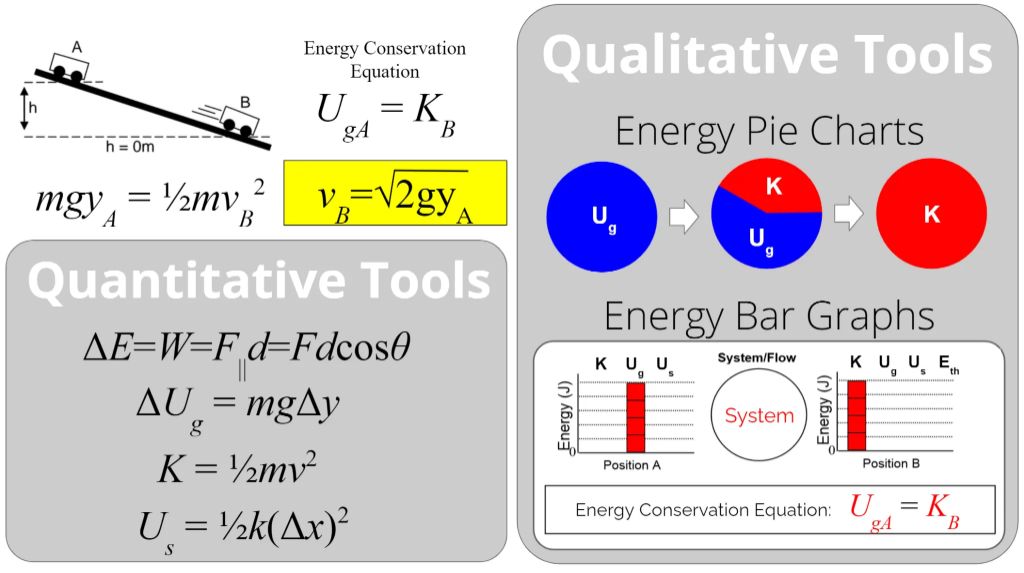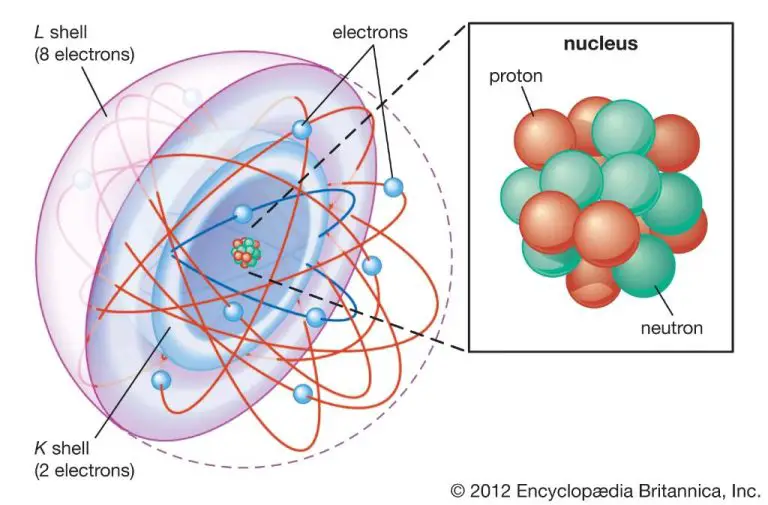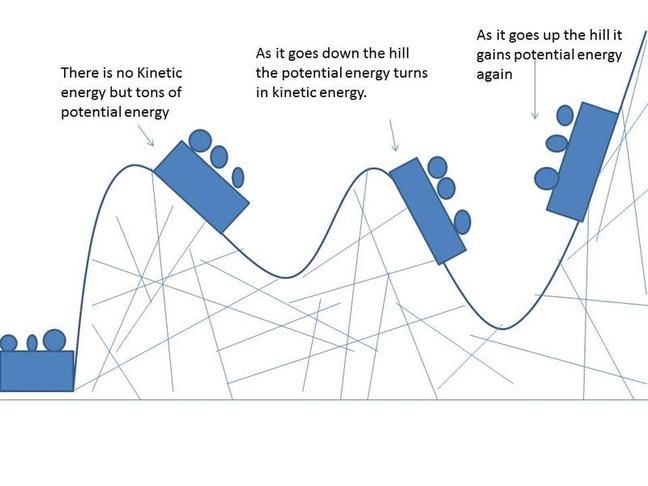Is Kinetic Energy Denoted As T?
Kinetic energy is the energy associated with motion. It is one of the most fundamental concepts in physics and is used across various fields including mechanics, thermodynamics, and electrodynamics. Kinetic energy is directly proportional to the mass and the square of the velocity of an object. The kinetic energy (KE) of an object can be calculated using the equation:
KE = 1/2*m*v^2
Where m is the mass and v is the velocity. This simple equation allows us to quantify the energy present in any moving object, which is essential for analyzing motion, collisions, rotational dynamics, and other mechanical systems. Kinetic energy is a scalar quantity and has SI units of joules (J). Along with potential energy, kinetic energy is one of the main forms of mechanical energy in physics. Tracking the kinetic energy of systems provides deep insight into the dynamics of that system.
The Variable ‘T’ for Kinetic Energy
In physics, the variable ‘T’ is commonly used to represent kinetic energy in equations and formulas. Kinetic energy is the energy an object possesses due to its motion. The standard notation is:
T = 1/2 mv^2
Where ‘T’ stands for kinetic energy, ‘m’ is mass, and ‘v’ is velocity. This equation shows that kinetic energy is directly proportional to the mass of the object and the square of its velocity. The 1/2 coefficient is due to the derivation of the formula.
So in summary, the variable ‘T’ is conventionally used as shorthand notation for kinetic energy in physics formulas and calculations. It provides a concise and standardized way to represent this important physical property.
Historical Use of ‘T’ for Kinetic Energy
The variable ‘T’ became the standard notation for representing kinetic energy in physics during the late 18th and early 19th centuries. Some of the key developments that led to this standardization include:
In 1788, French scientist Jean le Rond d’Alembert published his Traite de Dynamique, which represented kinetic energy with the variable ‘T’ in his equations of motion. This represented one of the earliest uses of ‘T’ for this purpose.
In 1807, French mathematician Joseph Louis Lagrange published his Mechanique Analytique. Lagrange used ‘T’ to denote kinetic energy in the formulation of his new analytical mechanics and variational calculus approach.
During the 1820s-30s, several important physics textbooks began adopting ‘T’ as the standard notation for kinetic energy, including those by Siméon Denis Poisson in France and Peter Guthrie Tait in Britain. This helped solidify ‘T’ as the preferred notation in physics.
By the late 19th century, ‘T’ was well established in physics and engineering textbooks globally as the standard notation for kinetic energy, a convention that has continued to the present day.
The reasons ‘T’ became the preferred notation likely include the fact that it was a short, convenient variable that had not been used for other purposes in physics. The early adoption by prominent scientists like d’Alembert and Lagrange in influential works also helped establish ‘T’ as the standard notation.
Kinetic Energy Equations

The most common equation where ‘T’ represents kinetic energy is:
T = 1/2 mv2
Where ‘m’ is mass and ‘v’ is velocity. This shows that kinetic energy is directly proportional to the mass and to the square of the velocity.
Another equation using ‘T’ for kinetic energy is:
T1 + T2 = Tf
This states that the initial kinetic energies (T1 and T2) sum together to equal the final kinetic energy (Tf) in a closed system. This shows the conservation of kinetic energy.
The variable ‘T’ is commonly used in these and other kinetic energy equations in physics due to historical convention.
Other Notations for Kinetic Energy
While ‘T’ is the most common notation for kinetic energy in physics, there are some less common variations as well. For example, sometimes ‘K’ may be used instead of ‘T’ to denote kinetic energy:
K = 1/2mv2
Using ‘K’ instead of ‘T’ can help distinguish kinetic energy from other physics variables like temperature, which also uses ‘T’. However, this alternate notation is rarely used in practice, with ‘T’ being the overwhelmingly dominant choice.
Overall, ‘T’ is standardized as the notation for kinetic energy across physics. But it’s worth being aware that in some rare cases, authors may use ‘K’ or other letters instead.
Advantages of Using ‘T’
The variable ‘T’ is often used to denote kinetic energy for several good reasons. First, the letter T seems like a natural abbreviation for the word “kinetic.” Starting both words with the same letter helps connect the variable to the concept it represents. This can aid memory and understanding when reading equations or explanations that use ‘T’ for kinetic energy.
Additionally, using a simple, one-letter variable like T keeps equations clean and uncluttered. Kinetic energy equations frequently contain other variables as well, such as mass, velocity, momentum, and others. Introducing a short, one-letter variable for kinetic energy helps streamline the equations and make them more readable.
Finally, the letter T is unlikely to be confused with other physics variables. Some letters like V or P already have common usages for velocity or momentum. But T is relatively unused, making it a good choice to uniquely identify kinetic energy. Overall, ‘T’ is an intuitive, clean, and sensible notation for this important physics concept.
Disadvantages of Using ‘T’
While using ‘T’ to denote kinetic energy has some historical precedent, there are a few potential disadvantages or sources of confusion from continuing this notation convention:
First, ‘T’ is a very common variable across many areas of physics and mathematics. Using it for kinetic energy when ‘K’ is already widely established could potentially lead to unclear notation and mix-ups between concepts.
Second, the lowercase ‘t’ most often represents time in equations and text. Seeing a ‘T’ in an equation could mislead some readers into thinking it refers to time, when in fact it represents kinetic energy.
Third, using an obscure variable like ‘T’ instead of the standard ‘K’ goes against the general practice of using intuitive, descriptive variable names where possible. This makes equations and explanations less clear.
Overall, while ‘T’ for kinetic energy has some precedent in more advanced treatments, it lacks intuitiveness and clarity compared to the standard ‘K’ notation. Unless there is a compelling reason to use ‘T’, sticking with ‘K’ avoids potential confusion from overload of the ‘T’ variable and nonstandard notation.
T’ in Other Areas of Physics
Note that ‘T’ can represent other variables besides kinetic energy. In thermodynamics, ‘T’ is commonly used to represent temperature. In mechanics, ‘T’ can denote torque or tension. In electromagnetism, ‘T’ represents the period of an oscillation.
So while ‘T’ is a widely accepted notation for kinetic energy in physics, it’s important to note the context it is being used in. The same letter variable can take on different meanings across physics disciplines. Always pay close attention to the units and context when interpreting a physics equation with ‘T’ to discern precisely what type of quantity it represents.
Conclusion
To summarize, the symbol ‘T’ is commonly used to represent kinetic energy in physics equations and formulas. While other notations such as ‘KE’ or ‘Ek’ are sometimes used, ‘T’ remains the standard shorthand notation for kinetic energy in most academic and scientific contexts.
This convention originated in the 1800s when pioneering physicists derived the fundamental equations of kinetic energy. The uppercase ‘T’ was chosen as a variable to denote kinetic energy for its simplicity and distinction from other physics variables. Since then, ‘T’ has been firmly established through tradition and widespread use in physics literature.
While some variations exist, textbooks, scientific papers, and academic courses almost ubiquitously adopt ‘T’ as the symbol for kinetic energy. This standard notation provides consistency and clarity for communicating and understanding kinetic energy principles across different fields of physics.
In summary, the use of ‘T’ for kinetic energy has a long-standing history and remains the predominant notation in physics today at both introductory and advanced levels. When kinetic energy equations and formulas are written, students and physicists can reliably expect to see this standard shorthand symbol.
References
Daintith, John. Oxford Dictionary of Physics. 6th ed. Oxford University Press, 2009.
Feynman, Richard P., Robert B. Leighton, and Matthew Sands. The Feynman Lectures on Physics. Vol. 1. Basic Books, 2011.
Goldstein, Herbert, Charles P. Poole, and John L. Safko. Classical Mechanics. 3rd ed. Addison Wesley, 2002.
Kibble, Tom W. B., and Frank H. Berkshire. Classical Mechanics. 5th ed. Imperial College Press, 2004.
Knight, Randall D. Physics for Scientists and Engineers: A Strategic Approach with Modern Physics. 3rd ed. Pearson, 2013.
Serway, Raymond A, and John W. Jewett. Physics for Scientists and Engineers. 9th ed. Brooks Cole, 2014.
Tipler, Paul Allen, and Gene Mosca. Physics for Scientists and Engineers. 6th ed. W.H. Freeman, 2007.
Young, Hugh D., and Roger A. Freedman. Sears and Zemansky’s University Physics. 13th ed. Pearson, 2012.







